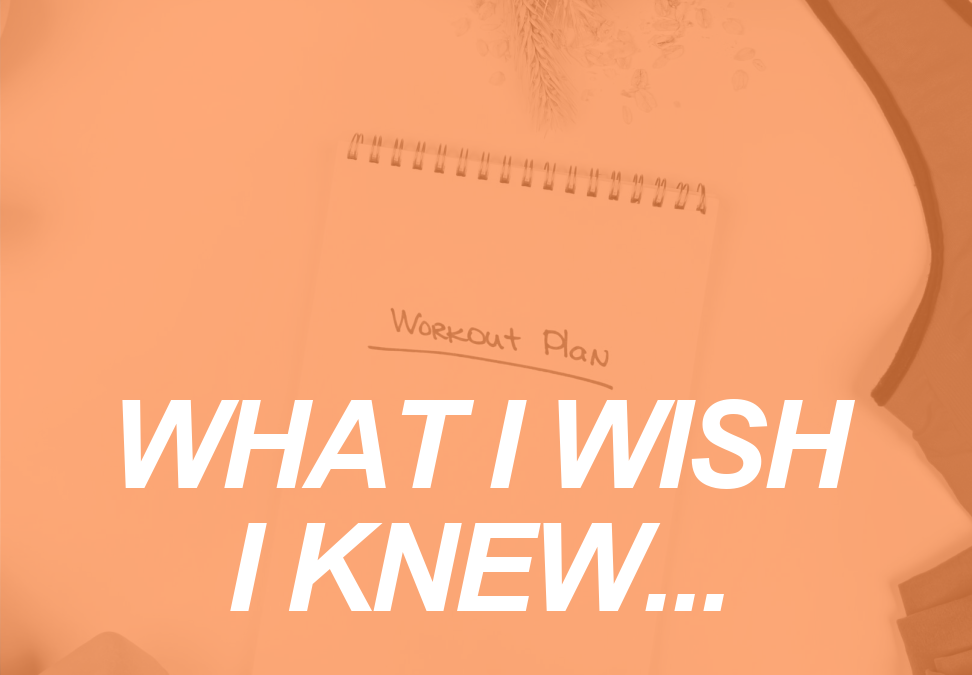My experience as a health and exercise professional started in 2003 after graduating with my bachelor’s in Exercise Science and achieving my first certification (NSCA-CPT). Early on in this experience, I relied too heavily on the science of program design and misjudged the art of it. While workout program design is rooted in science, it requires far more creativity and finesse (and trial and error) than any textbook lets on. Here are the top five aspects of program design I wish I knew at the start of my career.
1. Reps and sets are not the biggest factor. Of course, we need an understanding of how much volume to include but this is not nearly as important as asking your clients what they enjoy doing and what types of activities they are interested in trying. The most successful program is one your clients will enjoy and engage in consistently.
2. Progressive overload comes in many forms. Sure, adding two more repetitions to a set adding an additional set, or increasing the weight by 5% or 10% are all valid approaches (and effective). However, when it comes to challenging clients, consider changing their base of support, modifying the angle of an exercise, changing the implement (instead of dumbbells try a kettlebell, etc.), asymmetrical loading, incorporating multiplanar movements in a single exercise, add plyometrics, manipulating the rest period, including an AMRAP or EMOM finisher, etc. There are countless ways to get creative in advancing exercises and introducing a new challenge level to your clients.
3. Fitness assessments are not necessary for every client. All health and exercise professionals are familiar with a full battery of assessments ranging from resting and anthropometric measurements to cardiorespiratory fitness to muscular strength and endurance evaluations. There are two truths when it comes to fitness assessments. First, not every client necessarily needs an initial fitness assessment. Second, it is not necessary to conduct an assessment for each category of health-related fitness.
For example, a new client seeks your services and upon meeting them, you learn they are mostly sedentary throughout the day and walk one to two times a week for 20 minutes. It is not advisable to subject that client to a full battery of tests. We can reasonably deduce that their cardiorespiratory fitness level is not above average, and we do not need to confirm what we already know (based on knowledge and common sense) with a one-mile walk or 1.5-mile run. Subjecting clients to multiple assessments can work against them (and you). Start slow with your clients, explain what assessments are available, and ask what their interest is in establishing certain benchmarks (they may want to see how much they have improved from when they first start). You may choose to employ mobility or posture assessments for a new-to-fitness client that can help you narrow your focus on what their weak spots are, but these should not be intensive. Just bear in mind that you can train a client effectively without a slew of data or uncomfortable assessments.
4. It’s about the process, not the product. A well-designed and clearly defined goal is motivational and provides a target for achievement. Where I went wrong was focusing too much on the outcome the client wanted (weight loss, increased strength, etc.) rather than the process (client actions or behaviors) it was going to take to achieve said outcome. The best-written program is one that is connected to the client’s overall goal and prioritizes (and reinforces) those actions the client needs to take to support that outcome.
5. Keeping anecdotal notes is equally as important as tracking exercises and volume. Though personal training is a service for which we receive compensation, our goal should be to turn the client’s experience from transactional to relational. This means we must build (and keep building) rapport. Training sessions are ripe opportunities to engage in conversation with your client – ask them about their work projects, their families, their stressors, their social life, etc. When a client makes a comment about a work deadline, an event, or special occasion, write it down and circle back to it at your next session. “How did your daughter’s recital go?” “How did your proposal turn out?” Engage with your clients holistically.
Bonus Lesson: Have a plan but be flexible in your methods. Sometimes, your clients will show up and they have had “a day” or are on the struggle bus (or driving the struggle bus). It is human nature to experience highs and lows. If this happens, it might be the perfect time to offer a different approach instead of the workout you had planned. Maybe do an impromptu yoga or Barre session, or even a long walk. Or maybe your client needs an intense “burn” session instead of the dynamic recovery session you had originally planned. Be flexible. Be adaptive. Be ok with last-minute changes.
Of course, there are many more lessons I learned (and mistakes I made) in the last nearly 20 years, but these top the list for me. Program design, though rooted in science and evidence, requires artful application of those principles for the program to be truly effective for your clients.
[sc name=”leads” ][/sc]
Dr. Erin Nitschke, NFPT-CPT, NSCA-CPT, ACE Health Coach, Fitness Nutrition Specialist, Therapeutic Exercise Specialist, and Pn1 is a health and human performance college professor, fitness blogger, mother, and passionate fitness professional. She has over 15 years of experience in the fitness industry and college instruction. Erin believes in the power of a holistic approach to healthy living. She loves encouraging her clients and students to develop body harmony by teaching focused skill development and lifestyle balance. Erin is also the Director of Educational Partnerships & Programs for the NFPT. Erin is an editorial author for ACE, IDEA, The Sheridan Press, and the Casper Star Tribune. Visit her personal blog at belivestaywell.com


